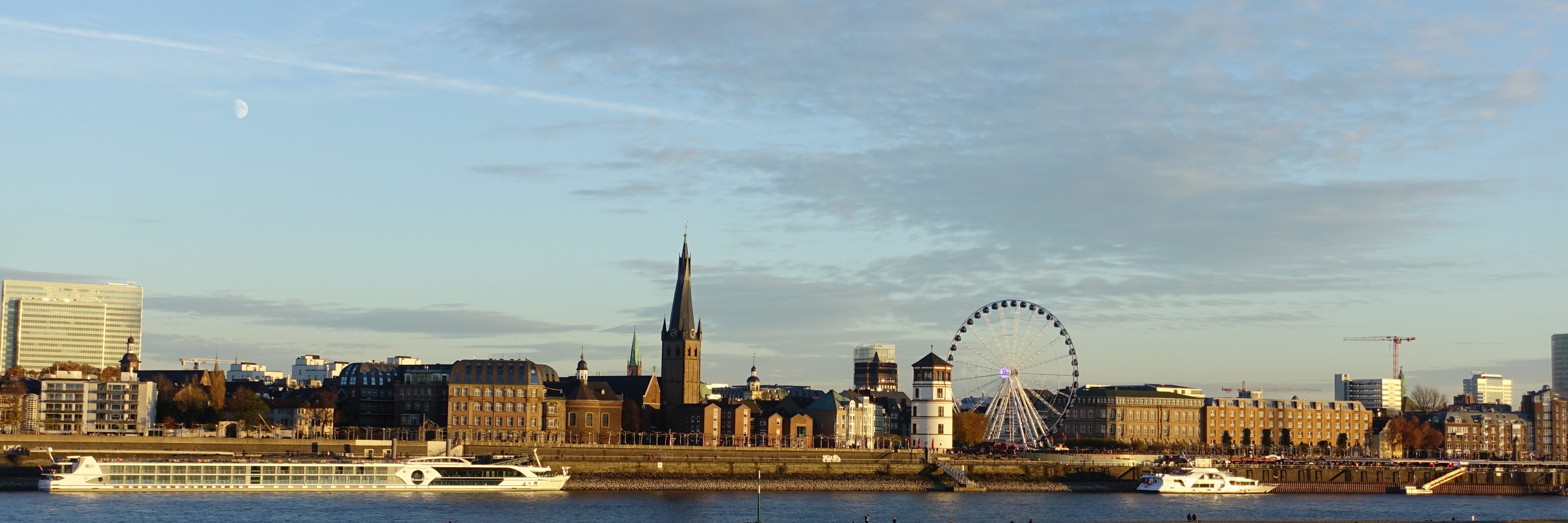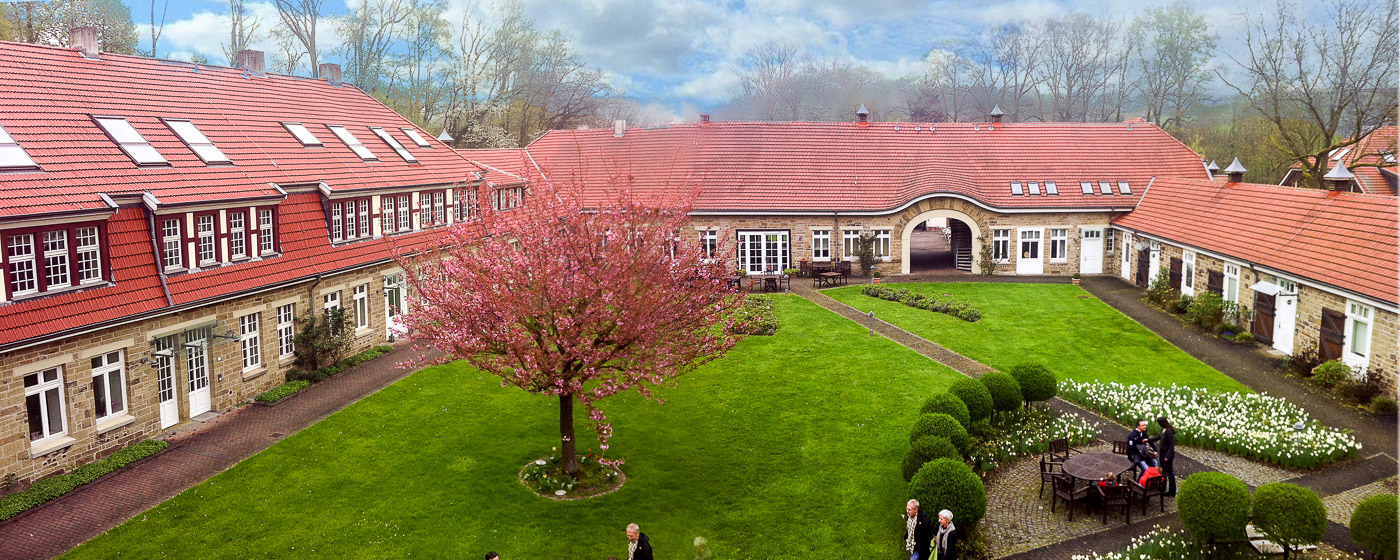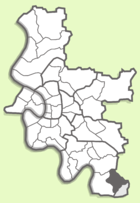
From the stern expressions and facial hair alone you know where this post is heading: Back to the 19th century. Specifically, the years 1871-1873, which are known as the Gründerzeit. It means “time of the founders”. The reference isn’t to the “founders” of Germany unity, which was finally achieved in 1871, but rather to the founders of businesses. The confident and wealthy newly-unified German Reich experienced a brief boom, from 1871 to 1873, in which the rate of business formation rose dramatically. A bust brought a halt to the dizzying rate of expansion, but Germany continued to gain rapidly in prosperity until the turn of the century and beyond.
It’s these three decades, more or less, which are now called the Gründerzeit in Germany. And why do we care? Because the Gründerzeit permanently shaped almost all German cities. The German population was expanding, and newly-wealthy industrialists and traders needed posh homes to advertise their status. Yet buying a country estate isn’t an option for a businessman who needs to keep an eye on his factories, workshops, and warehouses in the city. So German cities expanded compactly, so to speak, with new rows of townhomes rising at the edge of the city.
This fine article in Krautreporter (g) by Matthias Warkus examines what makes these buildings distinctive: elaborate decoration, large windows, and extremely high ceilings, usually between 2.8 to 3.5 meters (9 to 12 feet). Why did private construction companies build this way? Because high ceilings, large windows and stucco decorations were considered “noble” (hochherrschaftlich): they recalled actual castles and country homes from the 17th-19th centuries. These “noble” characteristics appealed to status-conscious 1880s businessmen and, thus, to banks: Since these design elements attracted prosperous tenants who could be counted on to repay their loans, the buildings could be financed at attractive rates.
As Warkus piece notes, the design elements — stucco ceiling rosettes and wainscoting, pediments above windows, high doors with internal stained-glass windows — were rarely handcrafted on the spot; they were usually simply ordered from catalogs and bolted into place. Nevertheless, they add a bit of flair and distinctiveness. This is one reason Gründerzeit-era buildings are so popular; each has its own personality. Of course, as Warkus quickly points out, Gründerzeit buildings are popular mostly among a certain social class — college-educated Germans, disproportionately media types and those in the liberal professions, who want to live in “cool” areas of larger cities, and can afford the rents in those places.
Most Germans, however, don’t want to live in an “old-building apartment” (Altbauwohnung). They don’t want to live in an apartment at all; they want to buy their own home, and when they do so, it looks like this — the “Town and Country Flair 113” model home which is the most commonly-built in Germany right now:

Another reason for their limited appeal is that apartments from the Gründerzeit have drawbacks: They’re drafty, often don’t have proper doors between rooms (if they have any doors at all), they have small tacked-on bathrooms, and inadequate electrical and data infrastructure. The wooden floors exude old-school authenticity, but can be creaky and hard to maintain. There are no elevators in them, and often no room to put an elevator.
Yet in many cases, it’s not necessarily the building itself which is attractive, but where it’s located. Gründerzeit buildings are most common near the city center, even if they were originally built on the outskirts of town. Neighborhoods with a lot of Gründerzeit buildings are filled with the type of people who want to live in such places; i.e. fellow well-educated, environmentally conscious creative types like you. And me! I live in a Gründerzeit building from 1900, and see dozens of them on walks through my neighborhood, Bilk in Düsseldorf. I like these buildings much more than anonymous cubes from the 1950s, and I’m not alone. At their best, they’re distinctive and pleasing to the eye. Not all builders ordered their decoration from catalogs, some hired artisans to create distinctive facades, with putti, Art Nouveau caryatids, sculptured lozenges, or floral decorations.
Yet the ornamentation doesn’t get the better of the design, as it sometimes does in the fungal profusion of Art Nouveau knickknacks bolted onto buildings in Belgium or France. You can almost hear the prim bourgeois instructing his contractor: “Yes, you may decorate the building. But don’t go overboard, chum. I paid for this building selling hail insurance. I don’t want potential clients thinking I’m some sort of socialist crackpot.” So the decoration is somewhat restrained. However, there is also a local tradition of painting Gründerzeit buildings in pastels and vibrant primary colors, which brings a much-needed splash in the gray days of winter.
Here are a few pictures from my neighborhood of Gründerzeit buildings (or convincing imitations of them):





































 The oldest parts of the historically-protected complex date to 1460, and it was most recently expanded into a stable in 1915. After the stables closed, the area was
The oldest parts of the historically-protected complex date to 1460, and it was most recently expanded into a stable in 1915. After the stables closed, the area was 
 1959 by the notorious (and notoriously auto-friendly) Düsseldorf architect and city planner Friedrich Tamms (think of him as the Robert Moses of Düsseldorf) as a planned community of medium-rise apartment buildings, 8000 apartments capable of housing 30,000 people. Because it was largely a designed community, critics call it a Retortensiedlung — a test-tube town, as opposed to a neighborhood which grew up organically. Tamms’ plan, with many modifications and additions, was realized in stages during the 1960s and 1970s. The overall style was mild Brutalism,
1959 by the notorious (and notoriously auto-friendly) Düsseldorf architect and city planner Friedrich Tamms (think of him as the Robert Moses of Düsseldorf) as a planned community of medium-rise apartment buildings, 8000 apartments capable of housing 30,000 people. Because it was largely a designed community, critics call it a Retortensiedlung — a test-tube town, as opposed to a neighborhood which grew up organically. Tamms’ plan, with many modifications and additions, was realized in stages during the 1960s and 1970s. The overall style was mild Brutalism, 















































